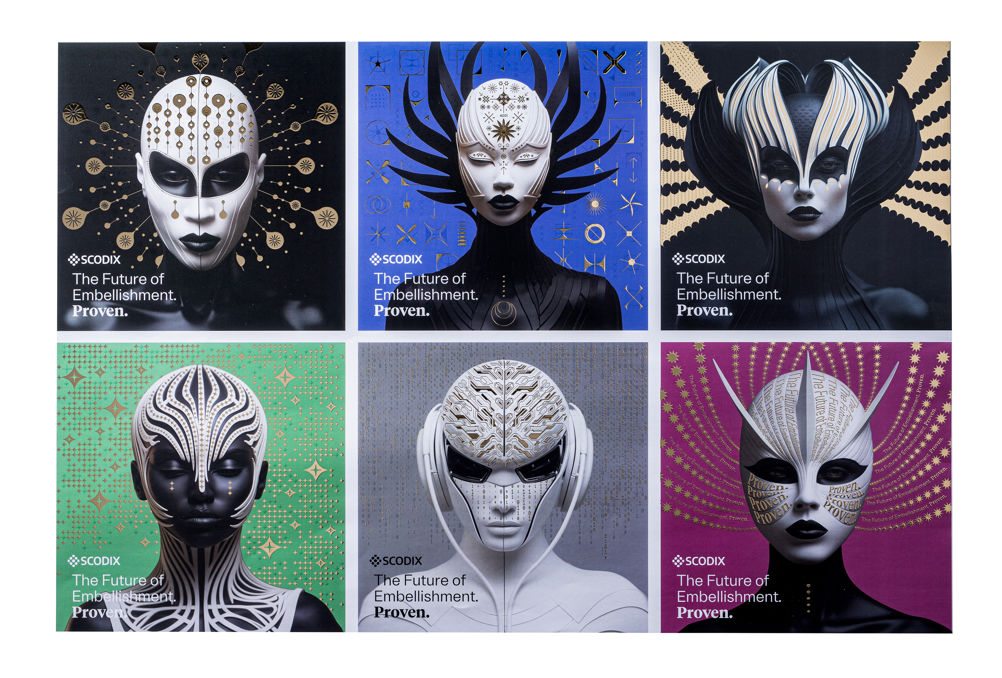Executive vice president of global sales and marketing Mark Nixon said the Düsseldorf expo would be “a seminal step in our story”.
“Demand is pent up. We expect this to be the embellishment Drupa – the embryonic stage of digital embellishment is now over,” he stated.
Scodix is also majoring on the proven credentials of its systems, with more than 450 installations worldwide since it shipped its first device in 2010.
The new Scodix Ultra 2500 (B2) and 6500 (B1) devices both features Scodix Smart High Definition technology for fine details and text, as well as additional automation and the promise of reduced cost per page.
Maximum resolution is 2,540x450dpi, and speed is up to 1,310sph for B1, and 1,446sph for B2.
Also new is Scodix MLE (Multi-Layer Enhancement), which enables the embellishment of uncoated stocks and provides the ability to apply multiple layers – up to seven – in a single pass.
Scodix’s unique tray technology means registration is tight at +/-100mic because the system does not let go of the sheet.
The first layer, a “selective micro coating primer”, is applied only in the areas to be embellished, so the look and feel of the rest of the sheet is unchanged.
Scodix said the layering option also made Braille and crystal effects “more economical”.
Nixon added: “So far we’ve done 90 tests of different uncoated stocks and the majority of them passed.
“Uncoated makes up around 40% of paper sales and is growing, so we’ve almost doubled our potential marketplace.”
He also noted that the Scodix devices could meet all global standards for Braille production.

The current range of ten embellishment options is expanded to 16 as a result of the new features, including Scodix Transparent.
In addition, new Scodix AI technology uses the know-how from the database of jobs produced using Scodix tech to analyse a proposed job and will then suggest “intelligent, proven design options” along with information on cost-per-page to help print buyers decide on the best embellishment option.
Nixon also pointed to a strong uptake in packaging applications, including the use of variable data, and said: “We have a huge amount of projects worldwide for versioned packaging.”
“Where run lengths are declining, this is where we start to come into our own with economics.
“We often compete [against conventional] on runs of 20,000, 25,000 and 30,000 sheet runs.”
Nixon also cited a recent job in the US that involved a whopping 287,000 sheets and took 27 days.
“We believe from an economic point-of-view we hold a lot of good things for the industry.”
Regarding sustainability, he said the firm had devoted a lot of time and investment into a deep dive into Scodix tech over the past 18 months.
Measuring Scodix’s impact against traditional embellishment methods using copper dies.
“It really was an eye-opener. In three sites around the world we measured runs from an energy perspective, a water perspective and a carbon perspective.
“We were significantly less on all three.”
Extensive tests on recycling and repulping have also been carried out, using jobs with “ridiculously high” embellishment coverage.
“We’re proud to say we got the certification, and we’re happy to share those certifications”.
The ingredients in the polymer used by Scodix for embellishment also passed the established Nestlé tests for indirect food contact.
The Israeli manufacturer is exhibiting in Hall 5, stand E11 at Drupa, which opens its doors on 28 May.
Its theme is ‘The Future of Embellishment. Proven’ featuring a series of dramatic, futuristic face images to showcase different Scodix techniques.










